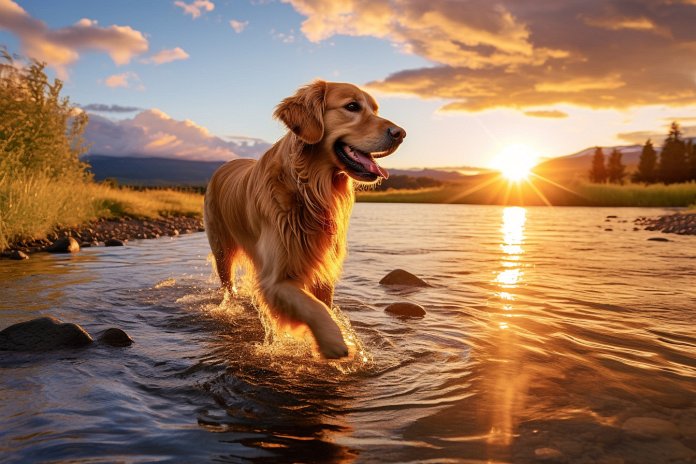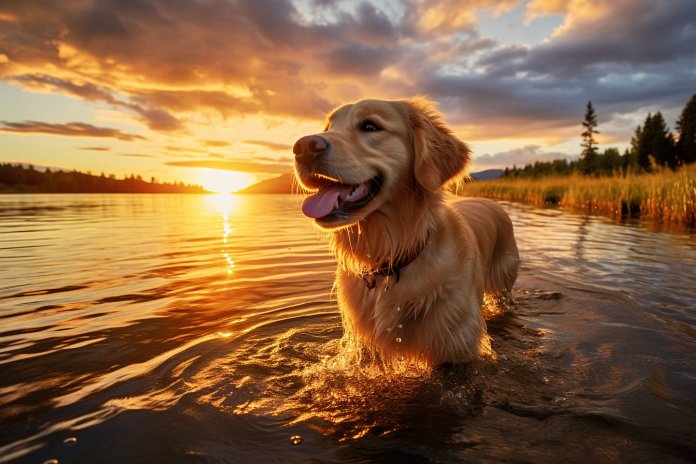
Dogs have a superior sense of smell and are highly proficient at tracking scents. They can be trained to assist humans in various tasks that require a sensitive nose. Dogs can even track scents through water, making them valuable in investigative contexts, such as searching for missing people. In this article, we will explore the amazing abilities of dogs to identify substances, even in challenging circumstances.
Signs That a Dog Can Smell Through Water
When a dog can smell something through water, they will display behavior consistent with the discovery of something interesting. They will become focused on a particular area, with raised ears and a wagging tail. If the dog is swimming in water containing a sample of a substance they are interested in, they will circle the area or return to it frequently. They will also alert their owner or handler to their discovery, either by sitting, laying down, or stopping at the location of the substance. Dogs that are not trained to detect specific substances will also show signs of alertness and may growl, whine, or bark to get attention.
Body Language
If a dog has detected something by smelling water, they may show signs such as alertness, whining, wagging their tail, and raised ears. They may also exhibit trained behaviors, circle the area, or try to get their owner’s attention.
History of Dogs Smelling Through Water
Dogs have always had an aptitude for discovering substances and objects contained within different materials. This made them useful in law enforcement and criminal investigations. Bloodhounds were even used by London’s Metropolitan Police during the hunt for Jack the Ripper. Dogs soon became a feature of modern policing, with techniques developed to train them to identify specific scents and respond to commands and aggressive behaviors. Dogs are now used in various operations, including search and rescue, reprimanding criminals, supporting security operations, assisting military personnel, detecting explosives, and identifying drugs or other illegal substances.
Science of Dogs Smelling Through Water
The canine sense of smell is highly developed. Dogs have 300 million olfactory receptors, while humans only have 6 million. The part of the brain responsible for interpreting smells is also 40 times more powerful in dogs. The canine respiratory system is precisely tuned for scent analysis, with separate routes for breathing and smelling. A dog can identify one tablespoon of sugar within a million gallons of water due to their powerful olfactory system.
Training Dogs to Smell Through Water
Training dogs to assist in law enforcement, search and rescue, or security is a complex process. It starts with selecting the most suitable breed for the task. German Shepherds, Beagles, Basset Hounds, and Labradors are commonly used. The first step is training the dog to be highly obedient and responsive to voice commands and gestures. Dogs that are difficult to control are unlikely to progress in their training. Dogs must also have the physical and mental capabilities to perform the tasks and be confident in busy environments. Specialist training is then provided to teach dogs how to identify specific substances using positive reinforcement techniques.
Conclusion
Overall, dogs have incredible abilities to smell through water and can be trained to assist in various tasks that require scent detection. Their superior sense of smell and specialized training make them valuable assets in law enforcement, search and rescue, and security operations.
“Believe it or not, a dog’s olfactory system is so powerful that they can identify one tablespoon of sugar in a million gallons of water! This is why our canine friends are invaluable in search and rescue operations, particularly when water is involved.”

Tips & Things to Know
1️⃣ Recognizing a dog’s behavior when it detects a smell through water includes signs like heightened alertness, focused attention on a specific area, ear raising, tail wagging, and recurrent visits to the same spot.
2️⃣ Dogs have a remarkable sense of smell, far superior to humans, due to their 300 million olfactory receptors and a part of their brain devoted to interpreting smells that is 40 times more potent than ours. This makes them highly effective in scent detection tasks, even through water.
3️⃣ The process of training dogs for scent detection is complex and starts with choosing the right breed. These dogs are then trained to be obedient, responsive, and able to cope in busy environments. Specific training is then given to help them identify certain substances, using positive reinforcement techniques.
Frequently Asked Questions, Answered ✅
1. How can you tell if a dog can smell something through water?
– A dog that can smell something through water will display behavior such as focusing on a particular area, raised ears, and a wagging tail. They may also circle the area or return to it frequently and alert their owner or handler.
2. What are the signs of a dog detecting something by smelling water?
– Signs of a dog detecting something by smelling water include alertness, whining, wagging tail, raised ears, and exhibiting trained behaviors. They may also circle the area or try to get their owner’s attention.
3. What is the history of dogs being used for scent detection in law enforcement?
– Dogs have always been skilled at discovering substances and objects within different materials, making them useful in law enforcement and criminal investigations. They have been used for various purposes, including tracking down Jack the Ripper. Dogs are now commonly used in search and rescue, reprimanding criminals, supporting security operations, and detecting explosives or drugs.
4. What makes a dog’s sense of smell superior to humans?
– Dogs have 300 million olfactory receptors, while humans only have 6 million. The part of the brain responsible for interpreting smells is also 40 times more powerful in dogs. Additionally, the canine respiratory system is specifically tuned for scent analysis, allowing dogs to identify substances even in minute quantities.
5. How are dogs trained to smell through water?
– Training dogs to assist in scent detection tasks requires a complex process. It starts with selecting a suitable breed, such as German Shepherds, Beagles, Basset Hounds, or Labradors. Dogs are then trained to be obedient and responsive to voice commands and gestures. They must also have the physical and mental capabilities to perform the tasks and be confident in busy environments. Specialist training is provided to teach dogs how to identify specific substances using positive reinforcement techniques.